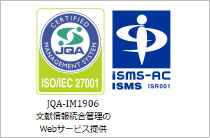ホームIMICライブラリMMWR抄訳2019年(Vol.68)メディケア受給者における糖尿病の有病率と罹患率 ―・・・
2019/11/01Vol. 68 / No. 43
MMWR68(43):961-966
Diabetes Prevalence and Incidence Among Medicare Beneficiaries — United States, 2001–2015
メディケア受給者における糖尿病の有病率と罹患率 ― アメリカ、2001年~2015年
糖尿病はアメリカにおける成人の約12%、65歳以上では約25%に影響している。2009年から2017年にかけて全体および65~79歳における糖尿病の有病率に有意な変化はないが、高齢者は5,000人未満のデータからの推定値であるため、今回、数百万人の高齢者が加入するメディケアのレセプトデータ(2001年~2015年)を使用し、年齢別(68~69歳、70~74歳、75~79歳、80~84歳、85歳以上)、性別、人種/民族別(白人、黒人、ヒスパニック系、アジア人/太平洋諸国民、その他)における糖尿病の有病率および罹患率を推定した。その結果、メディケア(診療ごとの個別支払い型)加入者における糖尿病有病率は2001年の23.3%から2012年には32.2%へと増加し、その後2015年までほぼ一定であった。Joinpoint回帰では有意な3つの傾向を認め、年変化率(APC)平均値は2001年から2008年にかけて+4%、2008年から2012年にかけては-1.4%、2012年から2015年にかけては-0.7%であった。糖尿病の有病率は白人が他の人種/民族に比べて低く、男性が女性に比べて高く[男性:24.7%(2001年)~34.7%(2013年)、女性:22.3%(2001年)~30.3%(2012年)]、一番高くなった年から2015年までは男女ともにほぼ一定であった。また、白人およびアジア人/太平洋諸国民での有病率は男性にて高く、黒人およびヒスパニック系では女性にて高かった。糖尿病の罹患率は2001年~2006年にて増加(APC:+4.5%)、2006年以降は低下(APC:-3.3%)した。年齢による罹患率の差は小さく、性別では男性にて高く、他の人種/民族に比べ白人にて低かった。また、有病率と同様に白人およびアジア人/太平洋諸国人では男性にて高く、黒人およびヒスパニック系では男女で同等であった。以上、メディケア受給者ではこれまでの調査結果に比べ糖尿病の有病率、罹患率ともに高く、今後、これらのデータは高齢者における糖尿病の予防および治療に重要な情報を提供すると思われる。
References
- CDC. National diabetes statistics report, 2017. Atlanta, GA: US Department of Health and Human Services, CDC; 2017. <https://www.cdc.gov/diabetes/pdfs/data/statistics/national-diabetes-statistics-report.pdf>
- Asghari S, Courteau J, Carpentier AC, Vanasse A. Optimal strategy to identify incidence of diagnostic of diabetes using administrative data. BMC Med Res Methodol 2009;9:62. <https://doi.org/10.1186/1471-2288-9-62>
- Centers for Medicare & Medicaid Services. CCW Medicare administrative data user guide, version 3.6. Baltimore, MD: US Department of Health and Human Services, Centers for Medicare & Medicaid Services; 2019. <https://www2.ccwdata.org/documents/10280/19002246/ccw-medicare-data-user-guide.pdf>
- Benoit SR, Hora I, Albright AL, Gregg EW. New directions in incidence and prevalence of diagnosed diabetes in the USA. BMJ Open Diabetes Res Care 2019;7:e000657. <https://doi.org/10.1136/bmjdrc-2019-000657>
- Kit BK, Fakhouri THI, Park S, Nielsen SJ, Ogden CL. Trends in sugar-sweetened beverage consumption among youth and adults in the United States: 1999–2010. Am J Clin Nutr 2013;98:180–8. <https://doi.org/10.3945/ajcn.112.057943>
- Ussery EN, Carlson SA, Whitfield GP, Watson KB, Berrigan D, Fulton JE. Walking for transportation or leisure among U.S. women and men—National Health Interview Survey, 2005–2015. MMWR Morb Mortal Wkly Rep 2017;66:657–62. <https://doi.org/10.15585/mmwr.mm6625a1>
- Mirel LB, Wheatcroft G, Parker JD, Makuc DM. Health characteristics of Medicare traditional fee-for-service and Medicare Advantage enrollees: 1999–2004 National Health and Nutrition Examination Survey linked to 2007 Medicare data. National health statistics reports; no 53. Hyattsville, MD: US Department of Health and Human Services, CDC, National Center for Health Statistics; 2012. <https://www.cdc.gov/nchs/data/nhsr/nhsr053.pdf>
- Bird CE, Shugarman LR, Lynn J. Age and gender differences in health care utilization and spending for medicare beneficiaries in their last years of life. J Palliat Med 2002;5:705–12. <https://doi.org/10.1089/109662102320880525>
- Day HR, Parker JD. Self-report of diabetes and claims-based identification of diabetes among Medicare beneficiaries. Natl Health Stat Report 2013;69:1–14.
Copyright © 2013 International Medical Information Center. All Rights Reserved.












